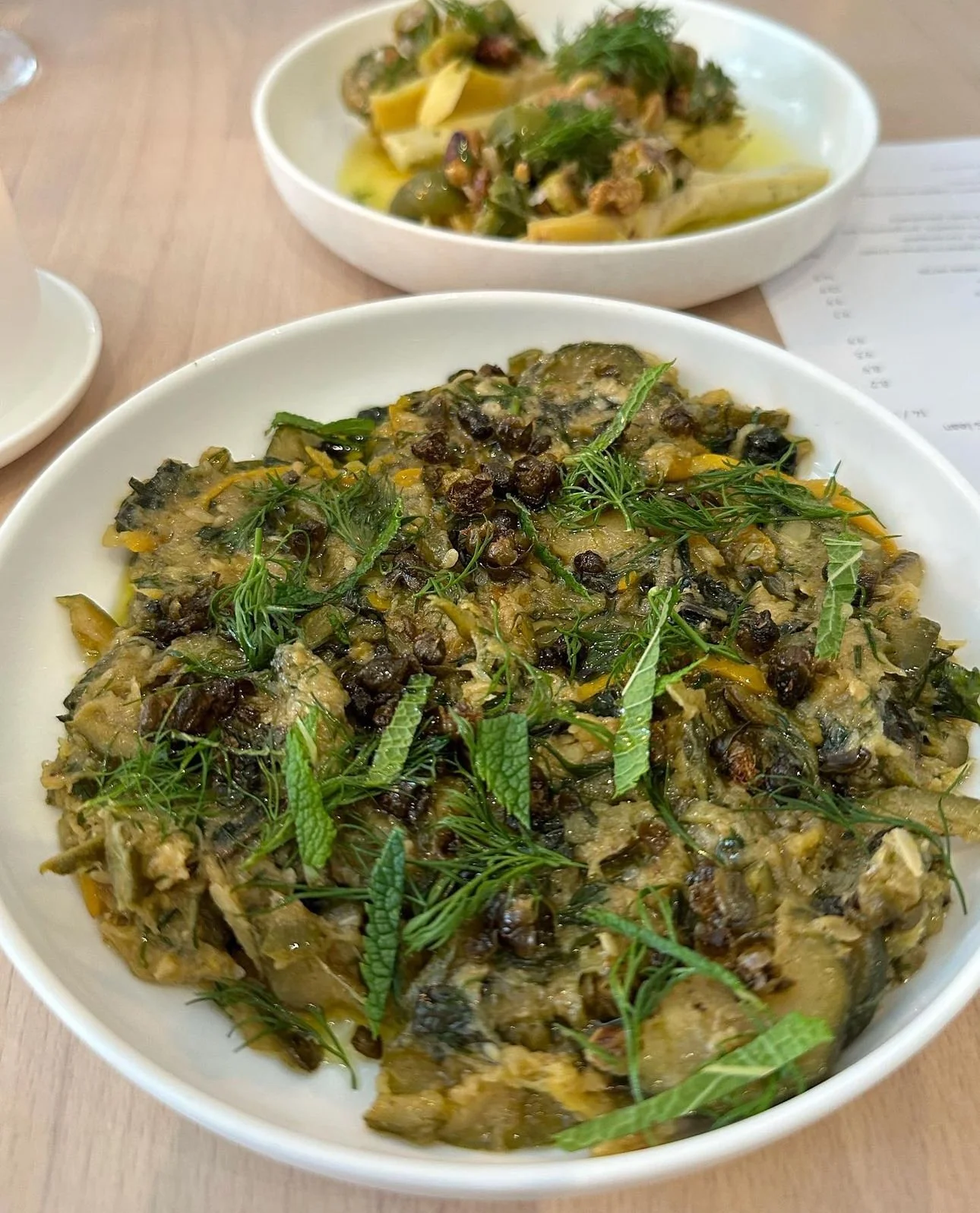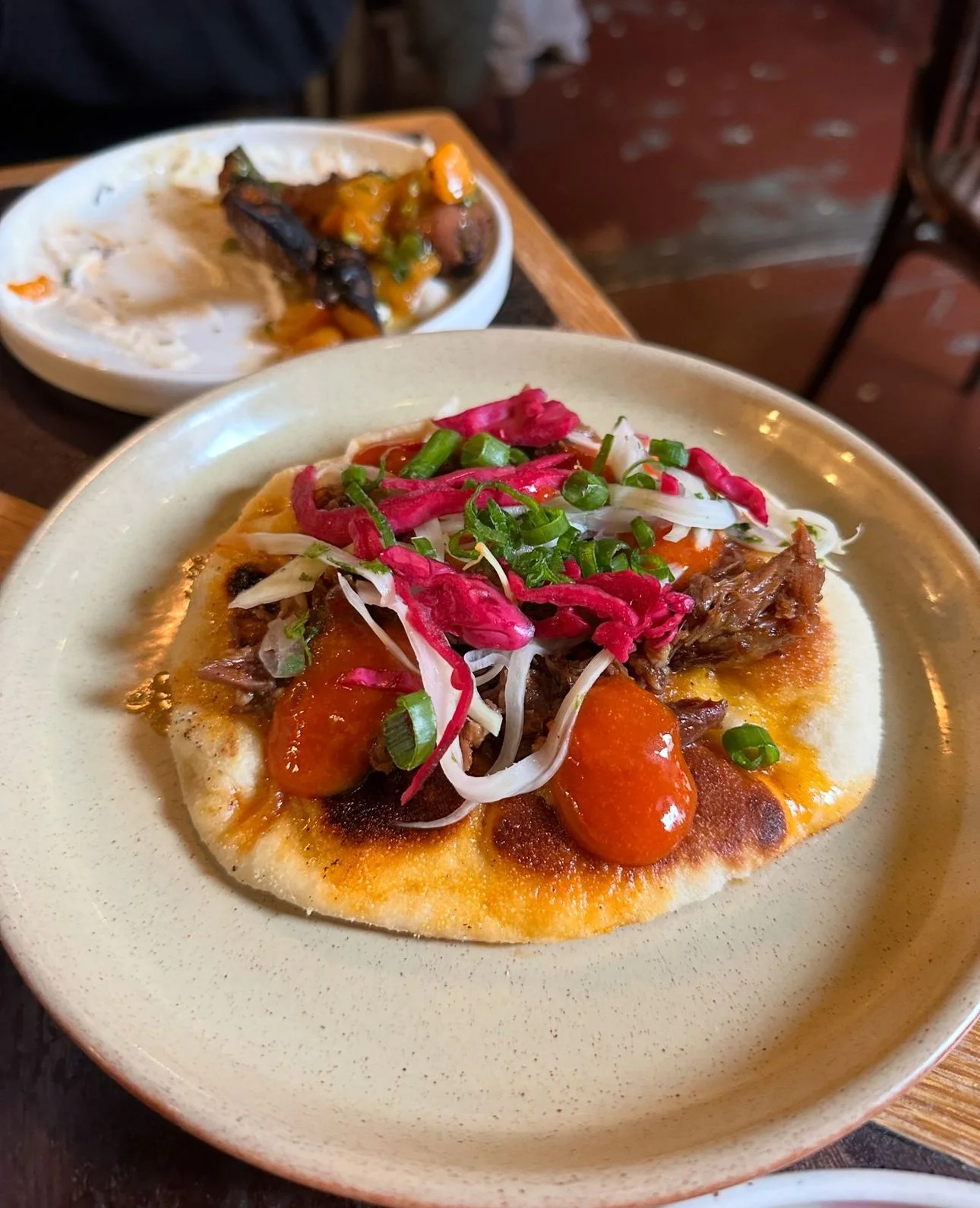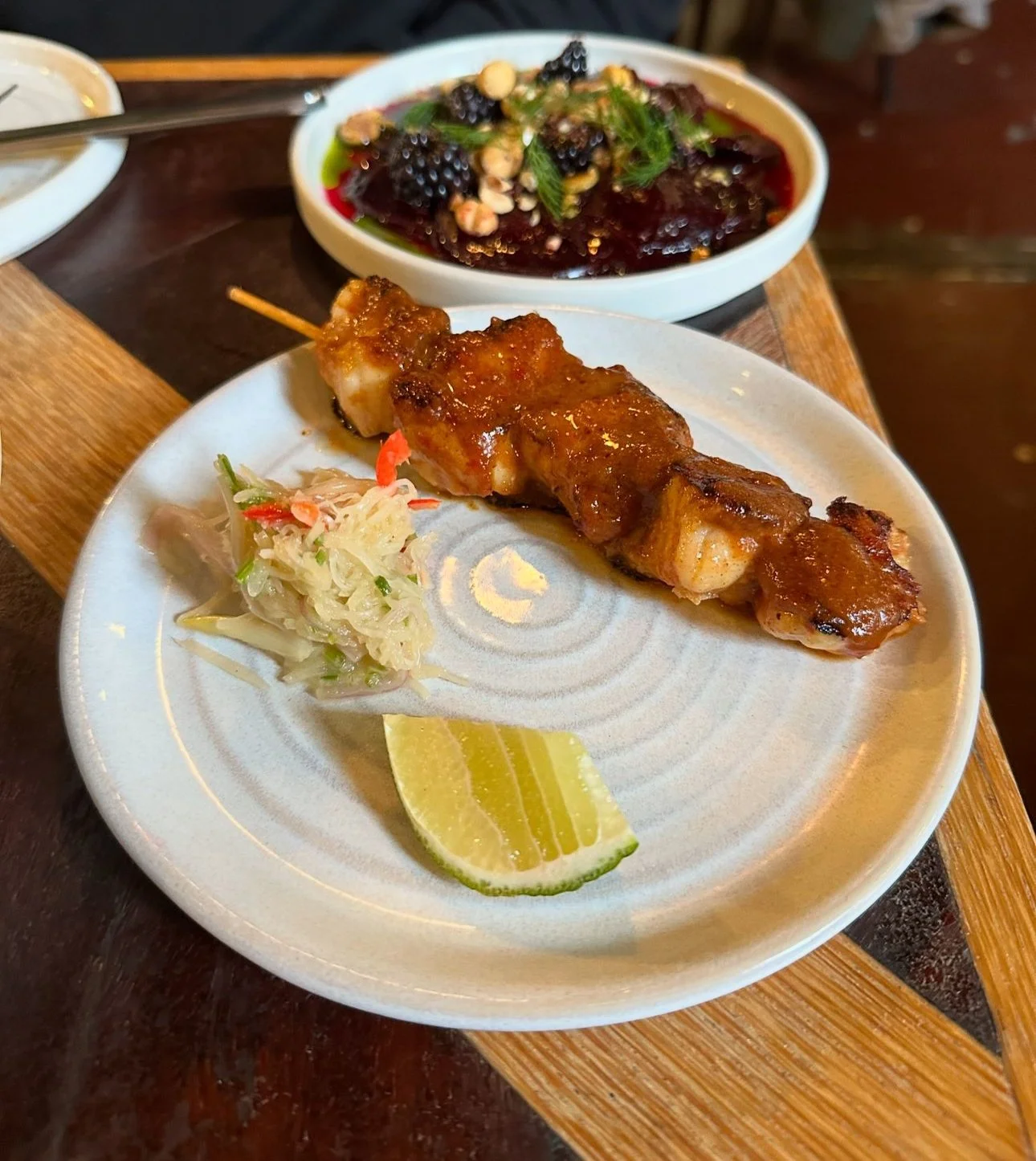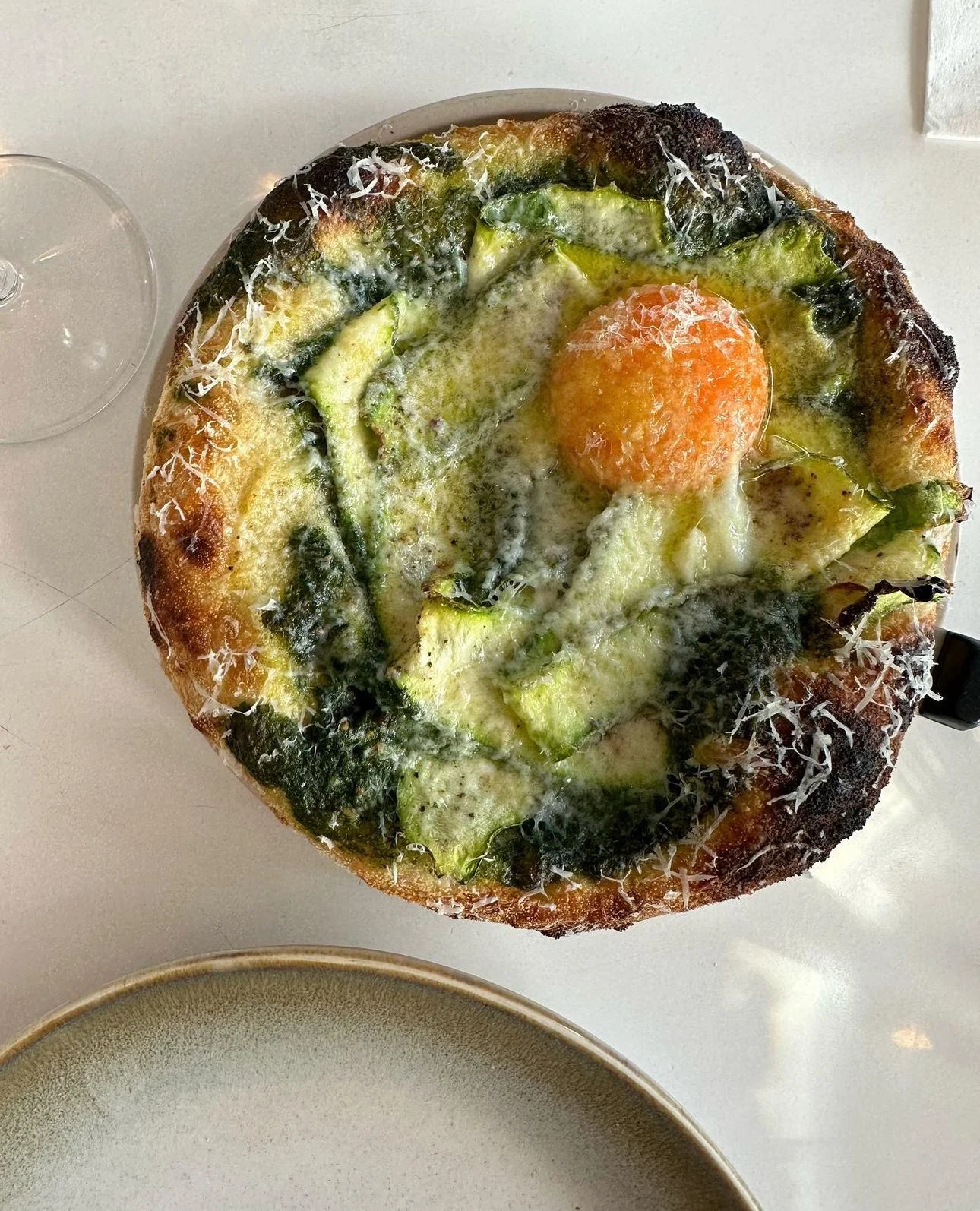A Defence of Small Plates
I do sympathise with those who ardently hate on the small plate. It’s easy to feel conned when a £14 dish arrives on a plate the size of a coffee coaster, and you realise you could easily devour the morsel in a singular bite. Or - a small plates favourite - when you dutifully order the recommended ‘2-3 plates per person’, wind up £50 lighter - and still leave the restaurant hungry. This modern phenomenon of small plates is an extremely fine line to balance, and let's be honest, some restaurants aren't quite getting it right.
But with all that being said, this isn’t the camp I live in and, if the above sounds all-too-familiar, then I’m here to change your mind. If you ask me, small plates are a joy to experience, and that is the hill I’ve been willing to die on. Maybe it’s the glutton in me, but I always struggle to pick just one thing off the menu. So small plates for me are a dream come true: I get to sample not just one of the dishes that have caught my eye, but three, four or even five. And isn’t this why we go out to eat in the first place? To be able to experience elevated cooking, exciting ingredients and combinations you’d never have been able to dream up in your own kitchen? The small plates style appears to me to offer creative freedom to the chefs who are feeding you, allowing them to play with a wider range of flavours and to showcase their skillset without the restrictions that a more traditional ‘main course’ menu style can enforce.
More than this, is there truly a worse feeling than ordering a main course and realising you’ve made a terrible mistake? Or feeling envy over the dish that your dining partner opted for? With the small plates concept, the pressure of making a singular decision is somewhat alleviated, and the sharing-style usually tends to mean that you get to try a little of everything (provided said dining partner is of the generous persuasion).
This sentiment is shared by Mark Chapman, Restaurant Director of Bedminster’s COR: “What if you enjoyed a 7 course tasting menu at a Michelin star restaurant? Essentially, they are small plates, but are served in multiple courses which make up the ‘tasting menu’. Equally, what if you enjoyed 7 tapas dishes at a local Spanish restaurant either here or in Espanol; what’s the difference? It’s simply down to your perspective and understanding of it. I personally think this is the best way to eat. You try more, explore more, have fun with more. You are not forced into a compulsory small plate tasting menu at a Michelin star restaurant; instead, you have a larger array of dishes which cater for everyone and their specific dietary requirements. That’s why I believe ‘small plates’ work. It's inclusive, offers choice, it’s actually fun, interesting, you can share it with your loved ones and it creates variety in your restaurant experience.”
The beef with small plates is really less about quality and more about quantity. In a cost of living crisis, value for money matters more than it ever has. In Bristol, we love to complain about the skyrocketing prices (both in restaurants and more widely), and heap blame onto the Londoner invasion, the Tory government (see ya), and the rise of small plates. But the fact is that suppliers costs are increasing and, if quality is to remain uncompromised, the produce is to remain fresh and local, and if the government and local councils will continue to increase rental costs and decrease support for independent businesses, restaurants are in a tricky spot if they want to keep the lights on.
Sustainability and seasonality is also at the heart of the issue. We spoke to Rob Howell, the Chef behind well-loved Bristol restaurant Root and its cookbook, about the small plates dilemma: “Small plates do get a bit of stick, I agree... But for us it’s always worked because it’s been a great way to showcase vegetables, because you don’t need to build a huge plate around something, you can really just show the vegetable for what it is. And I think that’s why it’s worked at Root; not overcomplicating it, not having to make it a certain size, or have a certain amount of protein or a certain price. It’s very flexible. And this makes it very easy to be flexible with our menu: we can swap and change things so that there is very little wastage. That’s why our menu, especially at this time of the year, is so adaptable as we use local suppliers and sometimes only have a small quantity of ingredients that are available at this time, as opposed to needing a constant supply for a set menu. It’s a much more sustainable way of building a menu. The idea of ‘small plates’ is also something we avoid too to be honest, as they’re not really small, they’re substantial plates that are designed for sharing.”
We also heard from Head Chef and Owner of Sonny Stores Pegs Quinn, who actually does share the gripes of many of the small-plate-haters: “sometimes when you eat out as a group, it forces you to have two smaller portions of something which is already small. And, let’s be honest, it’s been done to death.” But, given that 50% of the Sonny Stores menu is made up of small plates, Pegs did have some positives to add to the debate too: “What I do like about small plates is the flexibility that it allows you to build up an eclectic offering that sometimes can’t be achieved with a traditional full size plate menu, without being too full up and completely broke.”
I find myself defending small plates quite frequently these days: with friends, with colleagues, with family members. It would be easy to blame it on the ‘meat and two veg’ mentality of an older generation, if I wasn’t also having these debates with peers of my own age group. It often brings to mind the iconic Gavin and Stacey scene, where James Corden delivers an outraged monologue in response to the idea of everyone sharing a bit of each other’s curry orders (a huge part of the UK’s cultural zeitgeist, naturally). I have resigned myself to the fact that there are some minds I probably won’t ever be able to change, and that’s fine.
But here’s my take: whether you feel positively or negatively about the small plates concept ultimately comes down to your ‘why’. Why did you decide to visit this restaurant? Why did you choose it? Were you intrigued by the menu, had you heard a lot of buzz about it? Did you simply come here to treat yourself to someone else's cooking? The crux of the issue for me is that no one goes out to a nice restaurant (particularly one where you likely need to book at least a few days in advance) on a whim purely because they’re hungry, and they want a quick fix- that’s what fast food is for. Whether it’s Nandos or Nadu, Pizza Express or Pizzarova, you don’t go out for dinner just to feel full; there’s always some element of the experience of dining out that is likely the draw. You can have this experience without having small plates of course, but the ability to sample a wider variety of creative, seasonal dishes from an ever-changing menu is what I love most about going out for dinner. And, luckily for me, we are spoiled for choice in Bristol with a plethora of places who are offering just that.
Small plates, they could never make me hate you.
Written by Kat Keir
Kat is a Marketing Executive from rural Hereford who now calls Bristol home. She is an avid foodie and loves nothing more than going for dinner or trying new recipes. Other than her love of all things food and drink, her interests include literature, long walks listening to podcasts, last minute holidays and touching grass (aka getting out in nature).











